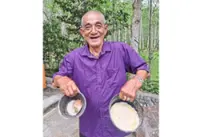PETALING JAYA: Times are tough but the tradition of giving ang pow remains strong with those celebrating Chinese New Year already setting aside a budget for it.
The only question is: How much to give?
Already a subscriber? Log in.
Save 30% for ads-free and full access now!

Cancel anytime. No ads. Auto-renewal. Unlimited access to the web and app. Personalised features. Members rewards.






































